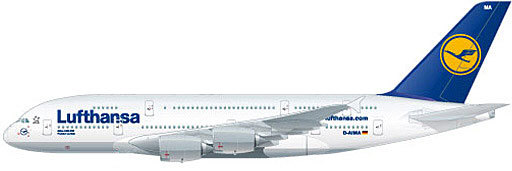
Deutsche Lufthansa AG is a global aviation group. The Group operates in five business segments, each dedicated to high quality standards. The five units - the passenger airline business, logistics, MRO, catering and IT services - all play a leading role in the industry in which they operate. The Lufthansa Group includes a total of more than 400 subsidiaries and associated companies.
The Lufthansa Group employed some 117,000 personnel at the end of 2010, and achieved total operating revenue of EUR 27.3 billion for the year.
The Lufthansa logo, an encircled stylized crane in flight, was created in 1918 by Otto Firle. It was part of the livery of the first German airline, Deutsche Luft-Reederei (abbreviated DLR), which began air service on 5 February 1919. In 1926 Deutsche Luft Hansa adopted this symbol, and in 1954 Lufthansa expressed continuity by adopted it, too.
The original creator of the name Lufthansa is believed to be F.A. Fischer von Puturzyn. In 1925 he published a book entitled "Luft-Hansa" which examined the options open to aviation policymakers at the time. Luft Hansa was the name given to the new airline which resulted from the merger of Junkers Luftverkehr AG and Deutscher Aero Lloyd.

The Airbus A380 – Lufthansa's new flagship
The A380 is the largest and heaviest passenger aircraft in the world. It is 73 meters long, 24 meters high, and has a takeoff weight of up to 560 tons. The Lufthansa A380 seats 526 passengers, and its four Rolls-Royce engines each generate 70000lbs of thrust. That's the rough equivalent of what 3500 cars could produce. Ecologically speaking, too, the A380 raises the bar. The megaliner is quieter than other planes, uses less fuel and can even “think” for itself and automatically apply the brakes after landing on the runway. Lufthansa has ordered 15 A380s, which will be delivered to the airline one after the next.
